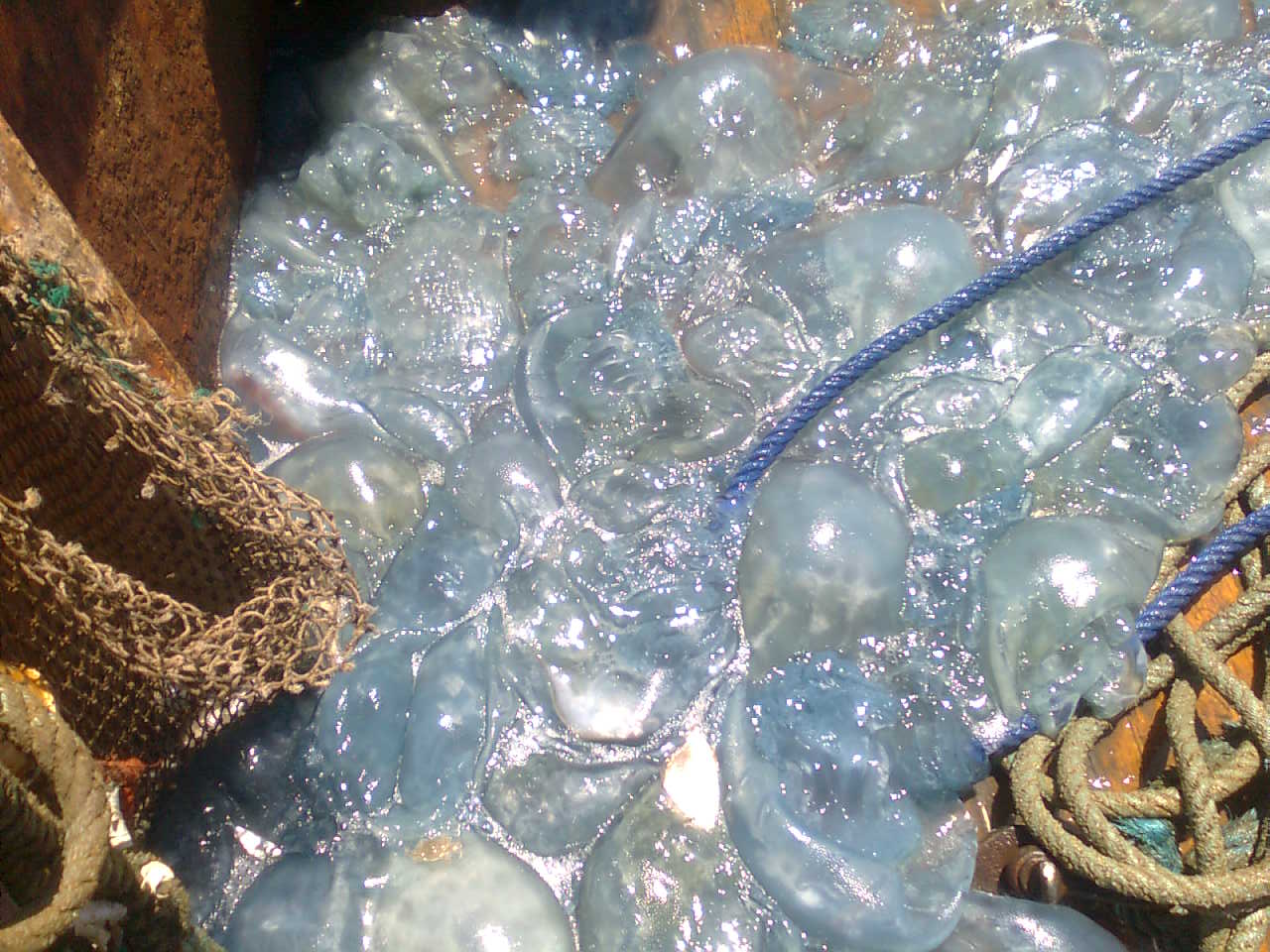Each summer since the mid 1980s huge swarms of the Erythrean jellyfish Rhopilema nomadica have appeared along the Levantine coast in the last week of June or in early July. This year saw the arrival of the swarm quite earlier, in the first week on June.
Rhopilema swarms clog fishing nets and contaminate catch and possibly cause reduction of commercial fish abundance through competition and predation. When swept near bathing beaches, they inflict painful injuries on unwary bathers. The annual swarming brings each year reports of envenomation victims suffering burning sensation, eurythema, papulovesicular and urticaria-like eruptions that may last weeks and even months after the event. Coastal municipalities report a decrease in holiday makers frequenting the beaches because of the public’s concern over the jellyfish. The local newspapers and TV news regularly report during the summer months the presence of jellyfish along the beaches of Israel.
Severe and frequent jellyfish outbreaks, mostly blooms of Pelagia noctiluca, have been reported in the Mediterranean in the past decade, causing health hazards and costly damages to tourism and fisheries. Increasing numbers of scientists (e.g., Boero et al. 2008) are drawing attention to the possibility that multiple stressors (overfishing, global warming, habitat modification, etc) may lead to an ecosystem shift from fish/ sea mammals-dominated food webs to gelatinous seas dominated by medusozoans. So what caused the arrival of Rhopilema so early this year ?
Boero F, Bouillon J, Gravili C, Miglietta MP, Parsons T and Piraino S (2008) Gelatinous plankton: irregularities rule the world (sometimes). Marine Ecology Progress Series, 356: 299-310.
|
unwanted yield - a trawl net filled withRhopilema,
Israel 5 June 2009

photo credit: Limor Shoval, IOLR
|



